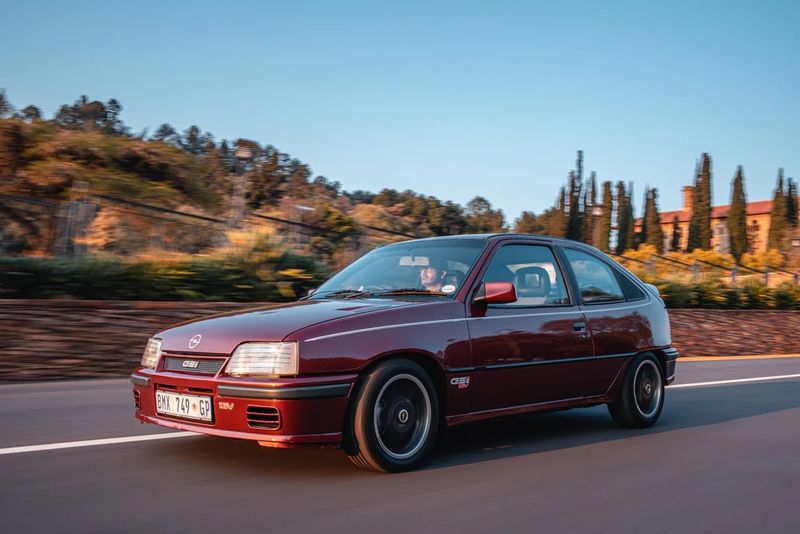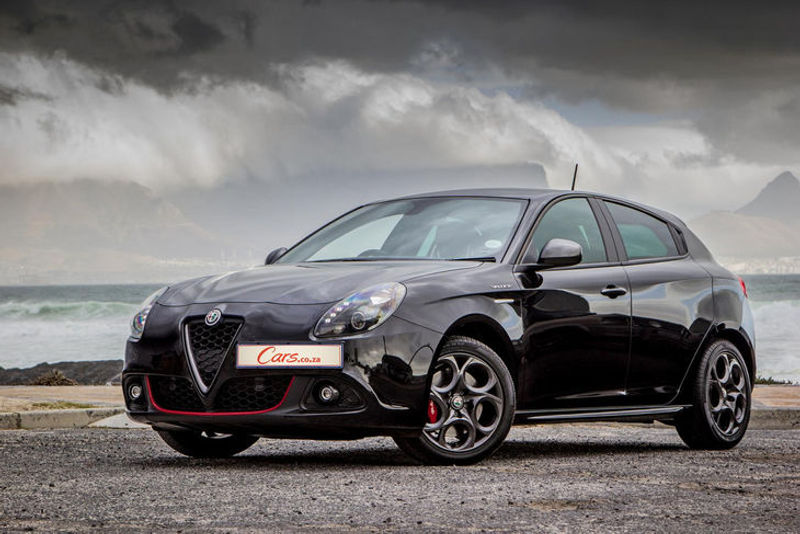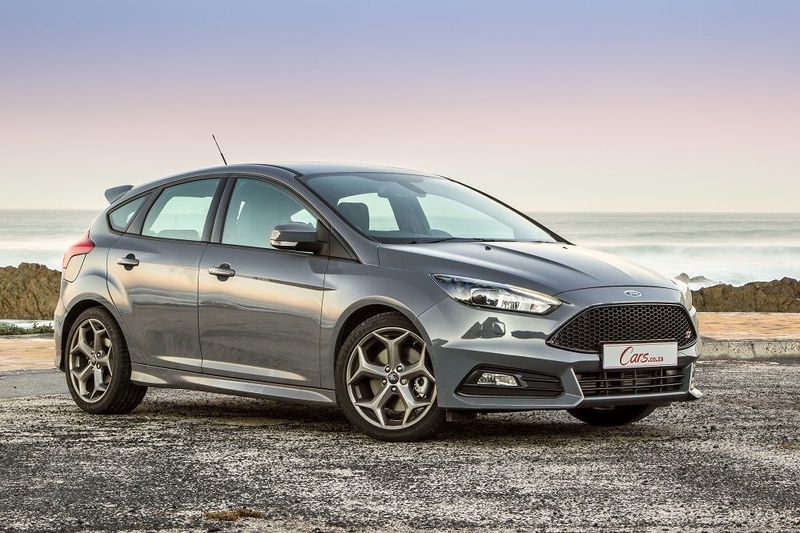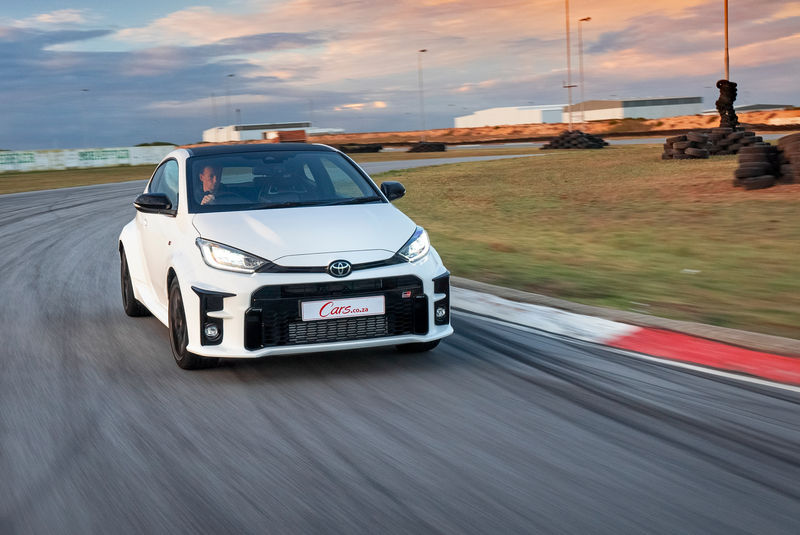The 21st-century hot hatch is fading – get one while you can
Birthed during the so-called decade of excess, mired in mediocrity in the ’90s and well and truly revived in the Noughties and early 2010s, the evocative hot hatch seems to be in decline again. Here’s why you should get one before it’s too late.
Forever subjected to divergent life cycles, prohibitive development costs and limited profitability (and today, societal disapproval of gas-guzzling raucousness), the hot hatch genre has forever trod the proverbial tightrope – boom or bust.

The category’s exponential growth from birth is rooted in the iconic Volkswagen Golf 1 GTI, which was produced between 1976 and 1983. The 1980s saw exponential economic growth defined by increased industrialisation, globalisation and liberalisation of capital flows. As the most evolutionary decade of the century, it unlocked rabid consumerism, technological advances and the explosion of popular culture.
The 1st GTI triggered a tsunami of clones from rival manufacturers, notably the Peugeot 205 GTI, Renault 5 Turbo, Ford Escort RS Turbo, VW Golf 2 GTI and GTI 16V, plus GSi variants of the E-generation Opel Kadett. Those that didn’t have turbos, brandished double overhead camshafts and (gasp!) 16 valves.

In South Africa, the production car racing series of the mid-’80s to early ’90s (initially known as Group N) made household names of the Toyota Conquest RSi Twin Cam 16, Golf 2 1.8 GTI 16V and Opel Kadett 1.8- and 2.0 GSi and 2.0 GSi 16V S “Superboss” – heck, even Mazda, Ford, Nissan and Fiat weighed in with hot-hatch versions of the 323, Laser, Sentra and Uno respectively. It was a blissful free-for-all.
Order a limited-edition 1/18 scale model of the unique-to-SA Opel Kadett Superboss from SentiMETAL

Yet, as symbolic as the “greed is good” speech in Wall Street (delivered by the Gordon Gekko character, in an Oscar-winning portrayal by Michael Douglas) was of a generation, the bubble was about to burst.
The global early-1990s recession slammed the brakes on the rapacious growth of the 1980s, and along with rollercoaster oil prices and economic uncertainty following the Gulf War, overnight high-priced low-volume halo models turned unpalatable to car companies. Also, the successors of the models on which many ’80s hot hatches were based became heavier, more upmarket products. The thrill was gone.

Only by the end of the ’90s did the segment reignite. The generational jumps from the tepid Golf 3 GTI to Golf 4 GTI (introduced in 1998) and finally, the benchmark Golf 5 GTI in 2004 – opened the floodgates for turbocharged hot hatches as ability, luxury, and inevitably, prices – increased correspondingly.
Find a new/used Volkswagen Golf GTI listed for sale on Cars.co.za
As car companies continued to master the intricacies of balancing performance with reliability in turbopetrol-powered cars, and the World Rally Championship was a go-to “win on Sunday, sell on Monday” shop window for hotted-up family hatchbacks, the segment reached its zenith.

Boom time was back. From 2000, almost every family car manufacturer built a foil for the Polo GTI or Golf GTI and virtually all of them were front-wheel-driven. Curiously, Toyota got out of the hot-hatch melee after the 2004 RunX 180i RSi, but did come back with a vengeance (more on that later). BMW stuffed a 3.0-litre inline-6 in the rear-wheel-drive 130i and later, a turbocharged 3.0-litre inline-6 in the M140i.
Unbeknownst then, most of those blitsbukse were on borrowed time.

Opel also produced various versions of the bristling Astra OPC and later, Corsa OPC (there was even a Zafira OPC people carrier), but the brand was neglected by GM and the OPC sub-brand withered.
Peugeot’s 207 GTI (2008) and its 208 GTI (2013) successor switched from the 206’s natural aspiration and used the same engine as the Mini Cooper S of the time; the larger 308 GTI followed in 2014.

Alfa Romeo’s 3.2-litre “Busso” V6-engined 147 GTA (2002-2005) was succeeded by the Giulietta Quadrifoglio Verde (QV) in 2010; the latter being closer in capability and concept to its Golf GTI rival. Fiat Auto SA (as it was then known) even offered a limited edition (SA-only) QV Squadra Corse TCT version in 2015, before the 1750TBI’s Cloverleaf emblem was removed and replaced with a Veloce badge.
The late 2010s marked a downturn for the hot hatch
Still, the zeitgeist of early-millennial, wide-eyed pre-recessionary optimism would dramatically taper off in the late 2010s, as corporate emissions taxes necessitated a greater push for electrification and more profitable models (hence the big swing towards platform-sharing crossovers). To cap it all, carmakers’ horrendous balance sheets post-Covid effectively foretold the demise of (by then, pricey) hot hatches.

For lovers of hot hatches built by Opel, Peugeot, Alfa Romeo (which also built a Quadrifoglio version of the Mito supermini) and perennial French oddball Citroën (creator of the 2004-2008 C4 VTS), that moment preceded Covid, but instead resulted from the establishment of the Stellantis group at the end of 2019. The newly formed conglomerate set off a raft of humdrum cost-saving, platform-sharing and badge-engineered measures that crushed any prospects of extravagant single-model variants.
It would have been similarly unimaginable 20 years ago – that societal evolution and market forces would push Ford towards discontinuing all of its hatches entirely. The ST-topped Fiesta line-up is already gone and what’s left of the Focus range will ride off into the sunset (overseas) in 2025. The 5-cylinder Focus ST had been a speed staple of this century, spawning an RS spin-off in 2009; and again in 2016 with a 2.3-litre version (that featured a drift mode) crowning the standard 2.0-litre ST line-up.
See also: Ford Fiesta ST (2013-2018) Buyer’s Guide

Whereas Volkswagen has gradually turned up the wick on its Golf GTI so as not to upset the balance of its icon (the Golf 8 GTI remains the most civilised offering in its class – watch our launch review and read our real-world review), France’s RenaultSport division, after which several generations of the Megane RS were named, ensured that its models retained a slightly feral edginess, not least an air of Gallic defiance.
See also: Volkswagen Golf 7 GTI (2013-2021) Buyer’s Guide
Renault’s ultra-hardcore Megane R26.R (2008-2009) was so stripped-out, it didn’t even have a radio. It was powered by a 2.0-litre, 4-cylinder turbopetrol engine that drove the front wheels via a limited-slip diff that also featured in its successor, the 3rd-gen Megane RS, of which there were myriad variants.
Watch Ciro De Siena’s video review of the Megane RS 300 Trophy
The engine capacity of the four-wheel-steering 4th-gen Renault Megane RS shrank to 1.8 litres while peak power jumped to 221 kW. A Trophy-R version held the front-wheel drive record at the Nürburgring for 4 years before being pipped by the current Honda Civic Type R in 2023 by a 0.4 sec. And, kudos to Honda – although the local subsidiary of the Minato-based brand isn’t nearly as big a force in SA’s new-vehicle market as it once was, it has offered every version of the Civic Type R in Mzansi since 2007.
Watch a drag race between a Honda Civic Type R and a Toyota GR Corolla
Today, after 4 generations and 27 years, the Megane (as we know it) is no more, even though Renault SA still lists the RS 300 Trophy as available. Today, the Megane is a crossover-flavoured EV (the E Tech).
Watch Ash Oldfield’s video review of the pre-facelift Hyundai i30 N
Then there’s the Hyundai i30 N, which was launched in South Africa (rather belatedly) in manual guise, and later as a facelifted auto. It’s an underrated contender and every bit a rival for the GTI, but because it’s a brand builder for Hyundai in our market, there’s no guarantee that it will continue to be offered here indefinitely. Then again, the lifespan of the PD-gen i30 model keeps getting prolonged, so who knows?
- Watch an i30 N compete in drag races against a Golf GTI TCR, Civic Type R and Subaru WRX
See also: Volkswagen Golf 8 GTI vs Hyundai i30 N – Which is the Better Buy?
Find a new/used Hyundai i30 N listed for sale on Cars.co.za
In the early 2010s, 2 out of 5 new Golfs sold in SA were GTIs. While the arrival of the Golf 8 saw the GTI’s price edge out of reach for most middle-class households, special versions (such as the Clubsport and Clubsport S) have historically layered on exoticness to ensure VW fanatics remain oh-so-friendly with their bank managers. The Golf 8.5 GTI has been revealed, but when it will arrive here remains to be seen.

Hyper hatches avoiding the hatchet for now
Isn’t it ironic that as hot hatches have become prohibitively expensive for most new-car buyers, their even pricier superiors – hyper hatches – seem likely to stick around for a bit longer? Keeping the faith for all-wheel-drive, the Golf 8 R continues as the über-Golf, alongside the mechanically identical Audi S3, while BMW has chipped in with the M135i, which will be badged M135 when the 4th-gen 1 Series arrives.
See also: Volkswagen Golf 8 R (2023) Review [with Video] | 245-kW VW Golf 8.5 unleashed
In 2013, though, the Three-pointed Star moved the goalposts with the arrival of the A45 4Matic+. Over the years, the outputs of its benchmark 2.0-litre 4-pot turbopetrol engine have ranged from 265 kW/450 Nm to 310 kW/500 Nm, giving rise to the 300 kW hyper-hatch club, of which Audi is the only other member, courtesy of its 5-cylinder RS3, which produces in 294 kW/500 Nm Sportback quattro guise.
See also: Audi RS3 (2015-2022) Buyer’s Guide

Sticking with the all-wheel drive theme, let’s finally return to Toyota, as I promised. The Aichi-based brand seemed to have said sayōnara to the notion of building driver’s cars for almost 2 decades (after the RunX 180i RSi), but then its Gazoo Racing division produced a pair of visceral hatchbacks in the shapes of the GR Yaris – watch/read our full review – and the recently launched GR Corolla.

The former was once said to be a homologation special (a limited-production car built to comply with WRC regulations), but even though they may be hard to get, Toyota has not stopped building them.
- Find a new/used Toyota GR Yaris or Toyota GR Corolla listed for sale on Cars.co.za
The 1.6-litre 3-cylinder turbopetrol all-paw GR hatchbacks may be among the finest of their breed, but in spirit, they’re closer to hyper- than hot hatches – and priced accordingly. The base-spec GR Corolla and GR Yaris Rallye cost just under R850k now and that’s before the 2024 spec makes its local debut!
Watch Ciro De Siena’s video review of the Toyota GR Corolla
The hot hatch is highly endangered – act now!
Suppose you’re still waiting for the ultimate hot hatch to arrive. We live in hope, after all. In that case, we have probably missed the boat: as the EU’s cut-off dates on ICE-powered cars tick down and investment in battery tech correspondingly rises – the exorbitant costs of developing and producing low volumes of standalone, petrol-fed “enthusiast” models simply make less business sense with every passing day.
From mainstream to niche, then peaking and now finally exclusive again, the bell has tolled for the once-affordable, practical thrills-a-minute hot hatch; and one that’s now been superseded by the very socio-economic evolution celebrating its arrival back in its heyday.
But what a ride it’s been. Here’s hoping you enjoyed it while it lasted.
Find exclusive car-themed merchandise at the SentiMETAL Shop
Related content:
Turbodiesel heroes you might have forgotten about
BMW X5: Most influential car of this century (so far)
Forget the M3 Touring, you want a Golf R Wagon